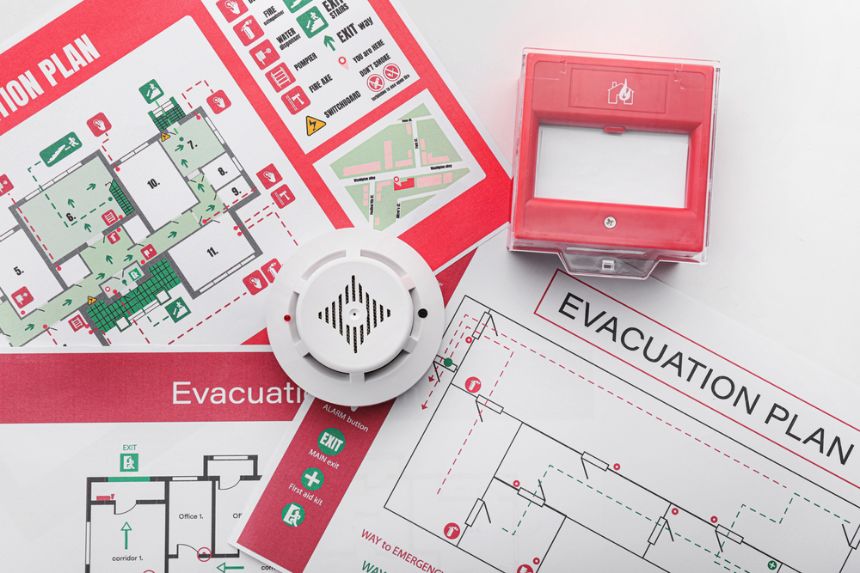
Having a well-crafted fire safety plan, including a home fire escape plan is essential for keeping your home or workplace safe. Fires can spread quickly, so a clear, accessible plan helps ensure everyone knows how to act in case of an emergency.
Whether you’re a homeowner or a business owner, creating a fire safety plan is a proactive step toward protecting lives and property. Here’s how to make a fire safety plan with simple, actionable steps to help you stay prepared.
Assess Fire Hazards
Identifying and reducing fire hazards is an important step in any fire safety plan, particularly in designing an effective home fire escape plan.
Start by finding any fire hazards around your home or workplace. Common fire risks include faulty electrical equipment, open flames, and flammable materials like papers or chemicals.
Doing an assessment will help you pinpoint potential dangers and take steps to reduce them, such as storing flammable substances securely and making sure electrical systems are up to date.
Install Fire Safety Equipment
Once you find the hazards, make sure you have the right fire safety equipment in place. Essential items include smoke alarms, fire extinguishers, and fire blankets.
For businesses, consider installing fire alarms and sprinkler systems. Regularly check that all fire protection equipment is functional and easily accessible, so anyone can quickly act if a fire breaks out. Servicing fire equipment is essential to make sure it’s functioning correctly.
Plan Evacuation Routes
Knowing how to exit a burning building safely is crucial in a fire emergency, especially as part of a home fire safety plan. Designate primary and secondary evacuation routes for each room in your building. Make sure everyone knows the exits in case of an emergency.
If you have employees or family members with disabilities, ensure that the evacuation routes accommodate their needs and allow for safe and swift exits.
Designate a Safe Meeting Point
After evacuating the building, it’s essential to have a predetermined safe meeting point. Choose an outdoor location that’s far enough from the building but easy to reach. For businesses, this could be a designated area in the parking lot, while homeowners might choose a spot near the driveway or across the street.
Assign Roles and Responsibilities
In a larger organisation or family, assigning specific roles can help make sure everyone knows what to do in a fire emergency. For instance, assign someone to call emergency services, another to assist with evacuation, and someone to manage first aid if needed. By creating these roles, you help streamline the response and improve everyone’s safety.
Conduct Fire Drills
Conducting a fire drill regularly helps assess the effectiveness of your fire safety plan and keeps everyone prepared. For workplaces, schedule drills quarterly, and for families, consider practising twice a year. During each drill, evaluate how smoothly the evacuation process went and make improvements as needed.
Review and Update Your Plan
Regularly review and update your fire safety plan to account for any changes in building layout, new equipment, or additional fire risks. This keeps the plan relevant and ensures everyone remains familiar with it. An updated fire safety plan is crucial for effectively handling emergencies.
Train Everyone on Fire Safety Equipment
Make sure everyone knows how to use the fire safety equipment installed in the building. For example, teach family members or employees the correct way to use a fire extinguisher (remember the PASS method: Pull, Aim, Squeeze, Sweep). Proper training can prevent panic and enable quicker responses in a fire emergency.
Stay Safe with Fullworks Fire Safety
Creating a fire safety plan can save lives and protect property. At Fullworks Fire Safety, we offer a range of fire safety equipment to help you stay prepared. Explore our range of fire blankets, fire extinguishers, and other essential tools to help you create a safer environment.
Contact us today to discuss your fire safety needs and make sure you’re equipped with everything necessary to handle an emergency confidently.



